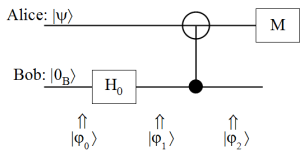 In the tradition of toy models of quantum mechanics in vector spaces over finite fields (e.g., Schumacher and Westmoreland’s “modal quantum theory”), one finite field stands out, ℤ₂, since vectors over ℤ₂ have an interpretation as natural mathematical objects, i.e., sets. This engages a sets-to-vector-spaces bridge that is part of the mathematical folklore to translate both ways between set concepts and vector space concepts. Using that bridge, the mathematical framework of (finite-dimensional) quantum mechanics can be transported down to sets resulting in quantum mechanics over sets or QM/sets. This approach leads to a different treatment of Dirac’s brackets than in “modal quantum theory” (MQT), and that gives a full probability calculus (unlike MQT that only has zero-one modalities of impossible and possible). That, in turn, leads to a rather fulsome theory of QM over sets that includes “logical” models of the double-slit experiment, Bell’s Theorem, quantum information theory, quantum computing, and much else. Indeed, QM/sets is proposed as the “logic” of QM in the old-fashioned sense of “logic” as giving the simplified essentials of a theory. QM/sets is also a key part of a broader research program to provide an interpretation of QM based on the notion of “objective indefiniteness,” a program that grew out the recent development of the logic of partitions mathematically dual to the usual Boolean logic of subsets.
In the tradition of toy models of quantum mechanics in vector spaces over finite fields (e.g., Schumacher and Westmoreland’s “modal quantum theory”), one finite field stands out, ℤ₂, since vectors over ℤ₂ have an interpretation as natural mathematical objects, i.e., sets. This engages a sets-to-vector-spaces bridge that is part of the mathematical folklore to translate both ways between set concepts and vector space concepts. Using that bridge, the mathematical framework of (finite-dimensional) quantum mechanics can be transported down to sets resulting in quantum mechanics over sets or QM/sets. This approach leads to a different treatment of Dirac’s brackets than in “modal quantum theory” (MQT), and that gives a full probability calculus (unlike MQT that only has zero-one modalities of impossible and possible). That, in turn, leads to a rather fulsome theory of QM over sets that includes “logical” models of the double-slit experiment, Bell’s Theorem, quantum information theory, quantum computing, and much else. Indeed, QM/sets is proposed as the “logic” of QM in the old-fashioned sense of “logic” as giving the simplified essentials of a theory. QM/sets is also a key part of a broader research program to provide an interpretation of QM based on the notion of “objective indefiniteness,” a program that grew out the recent development of the logic of partitions mathematically dual to the usual Boolean logic of subsets.
Quantum mechanics over sets
October 24, 2013 by